实例介绍
【实例截图】
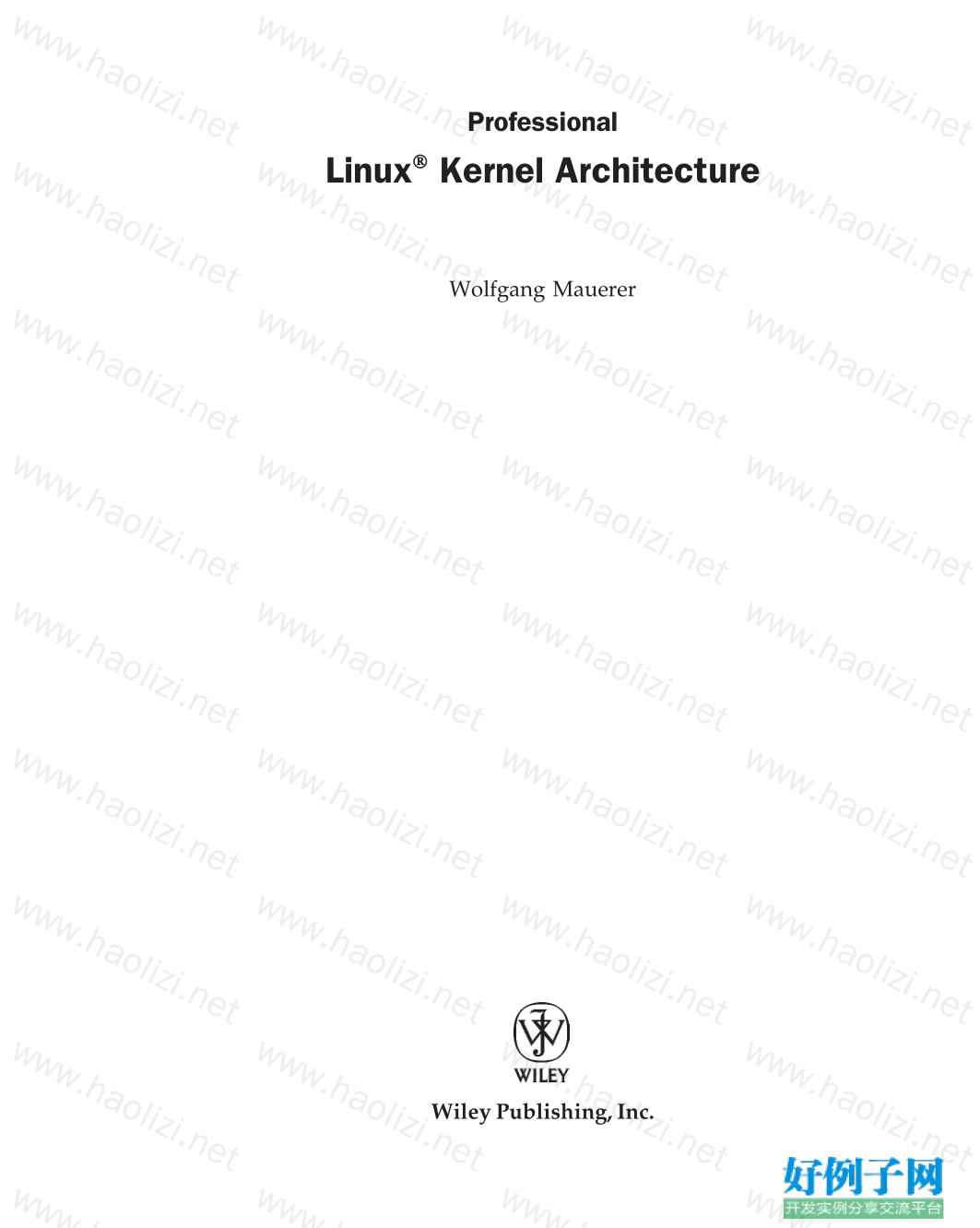
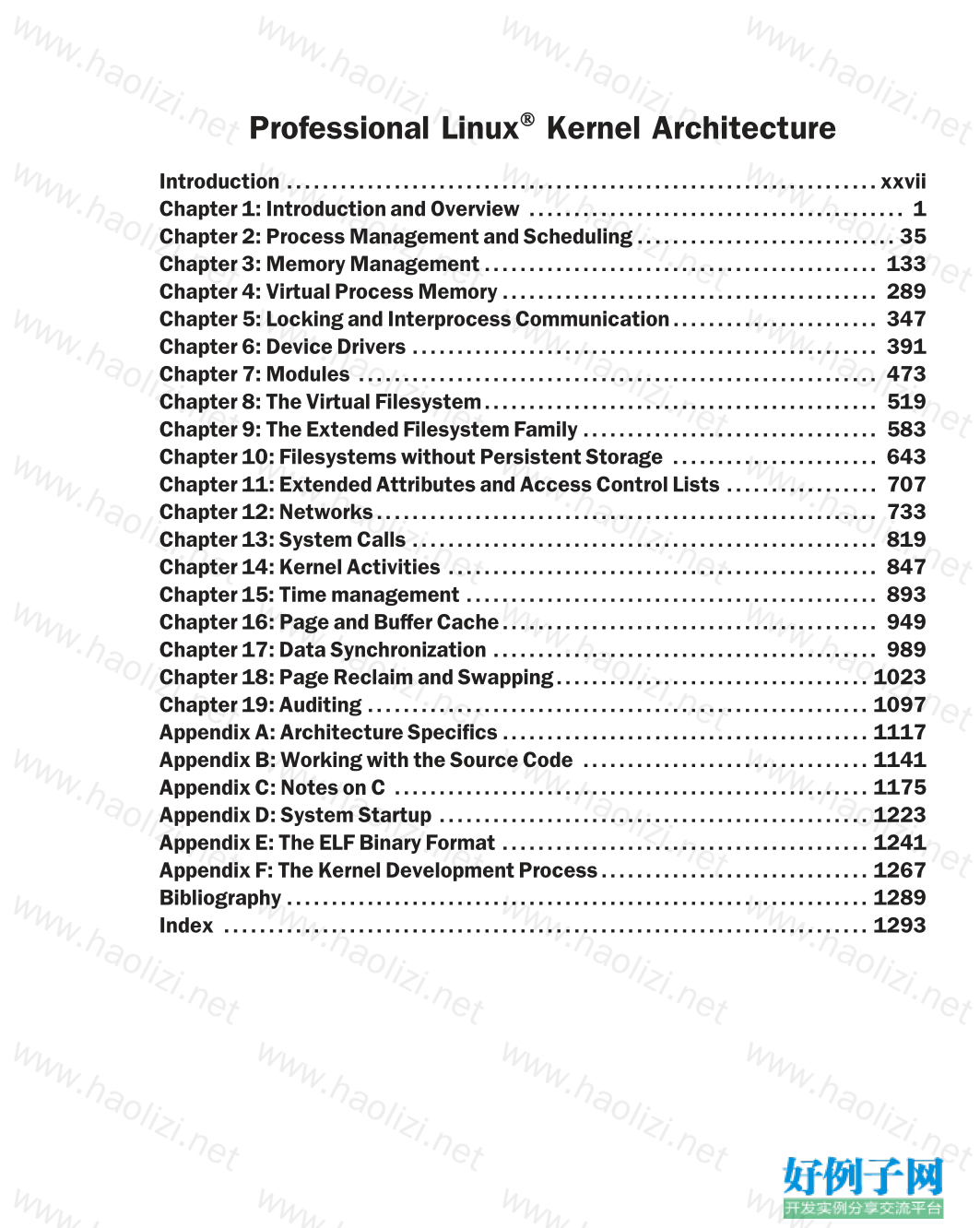
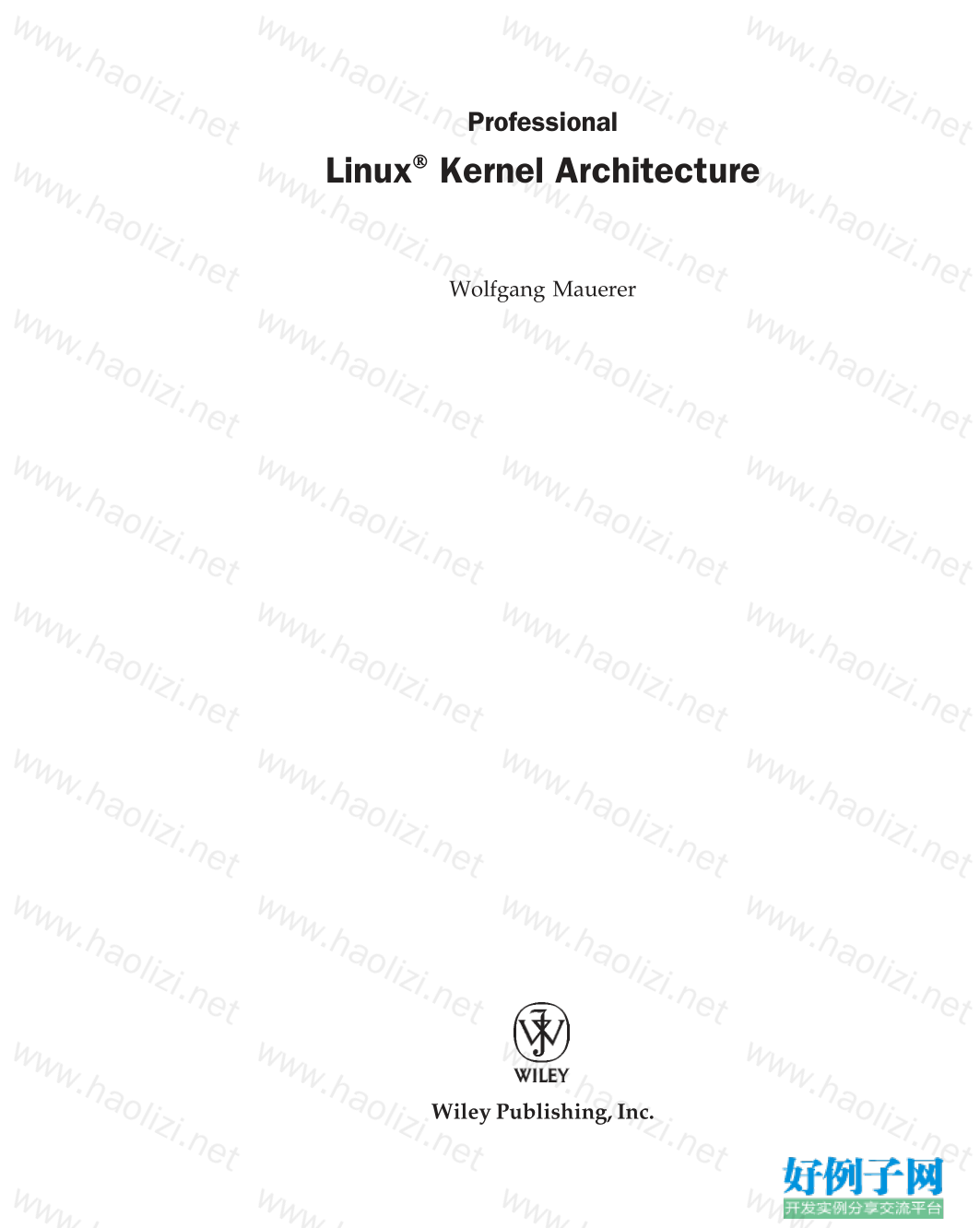
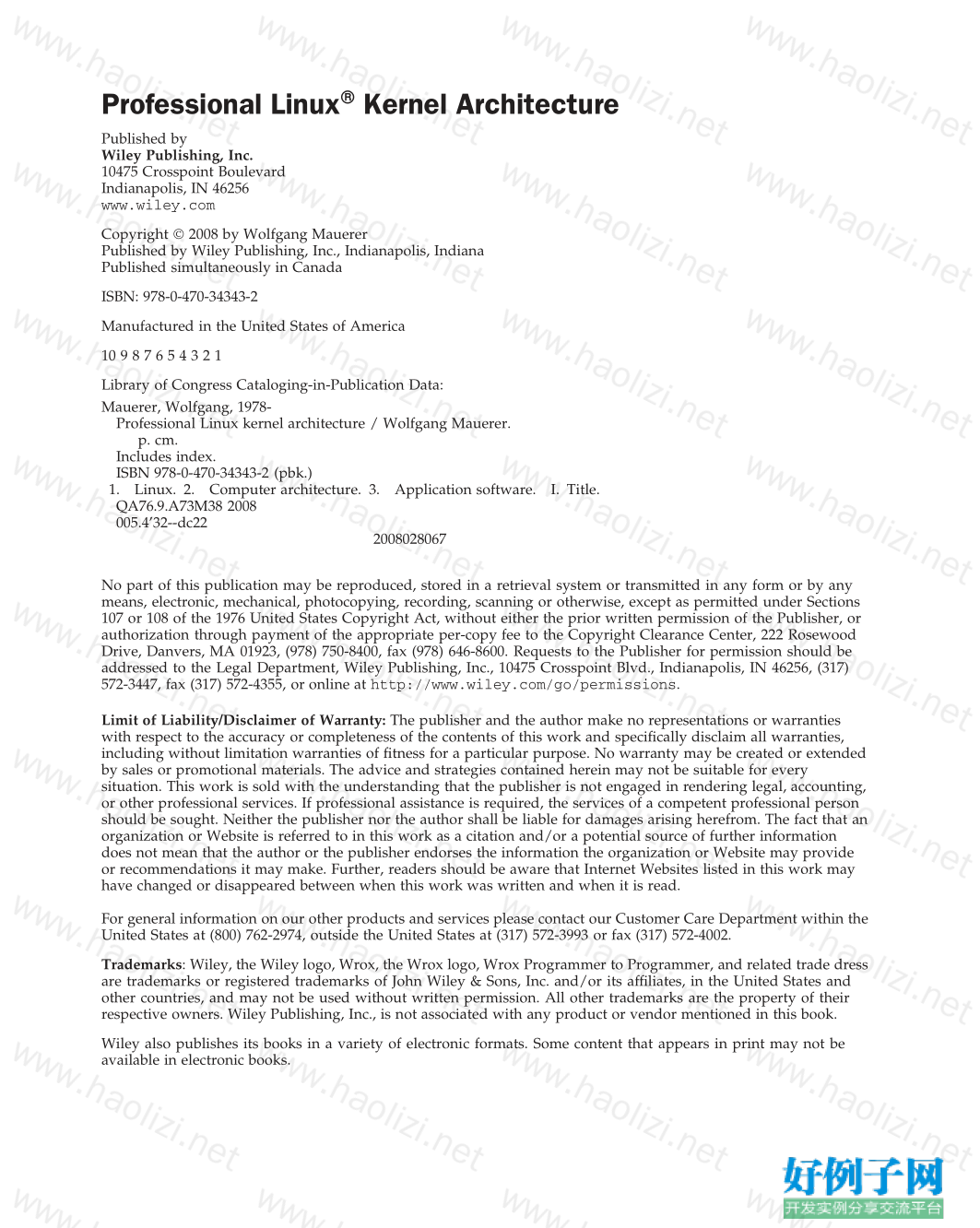

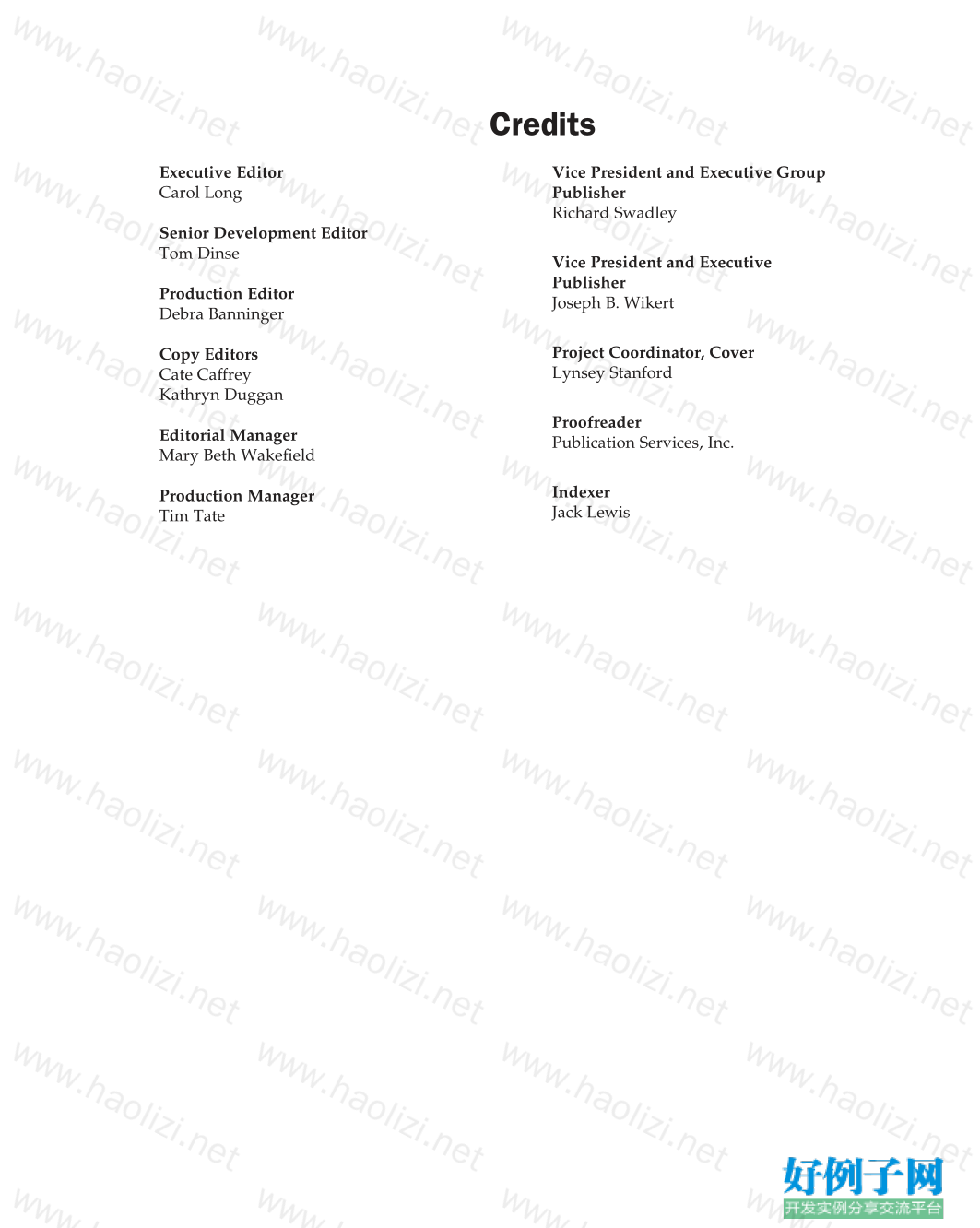
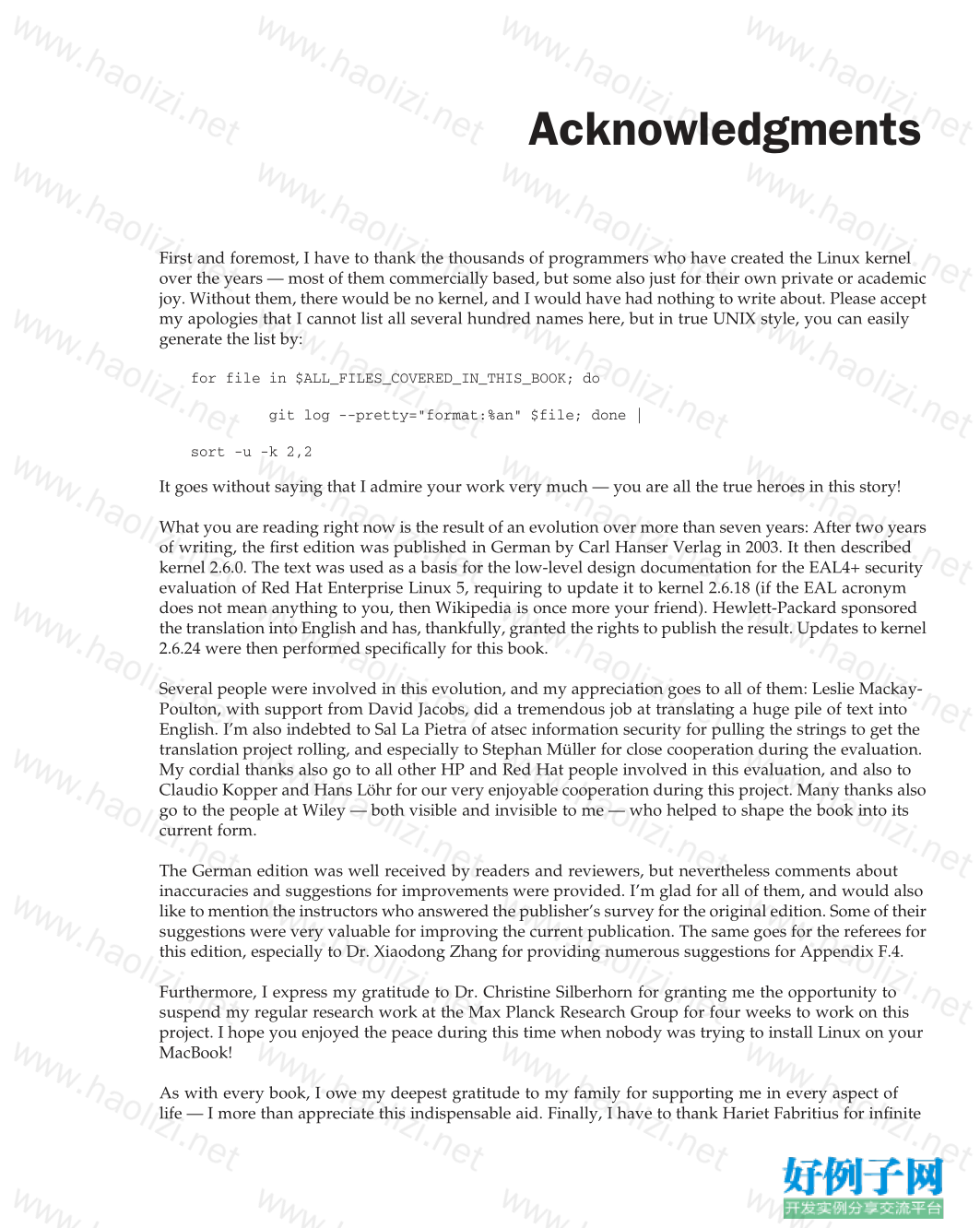


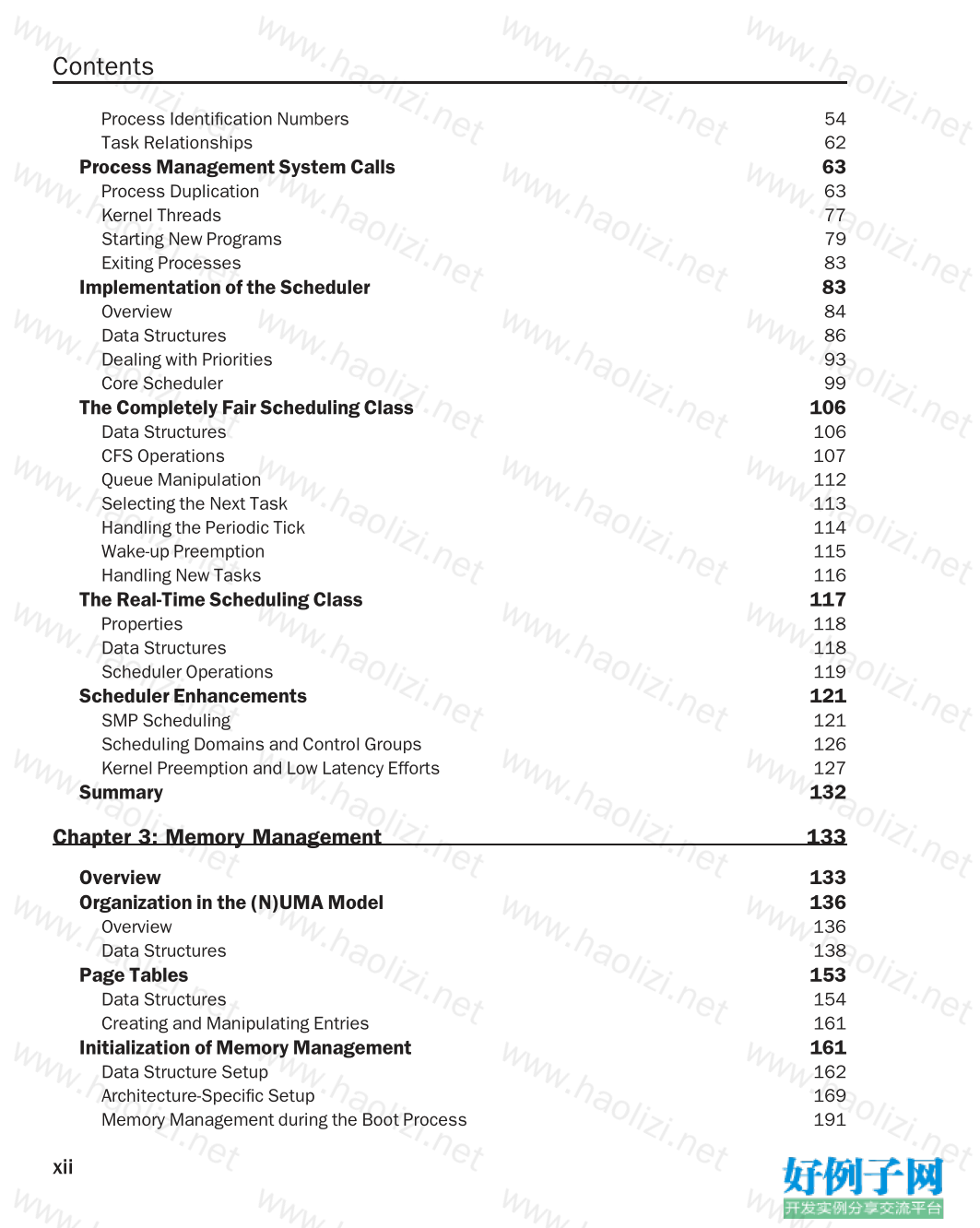
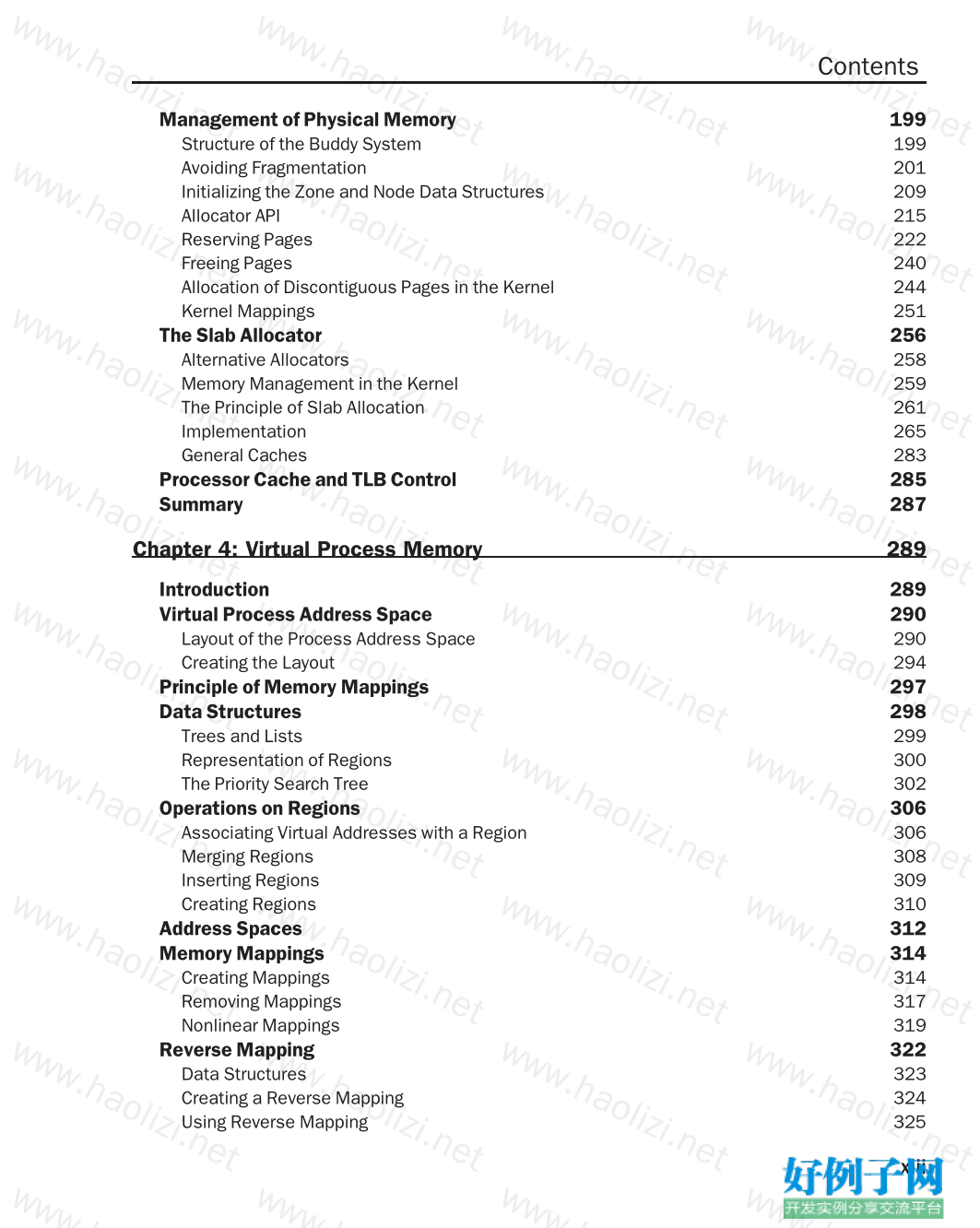
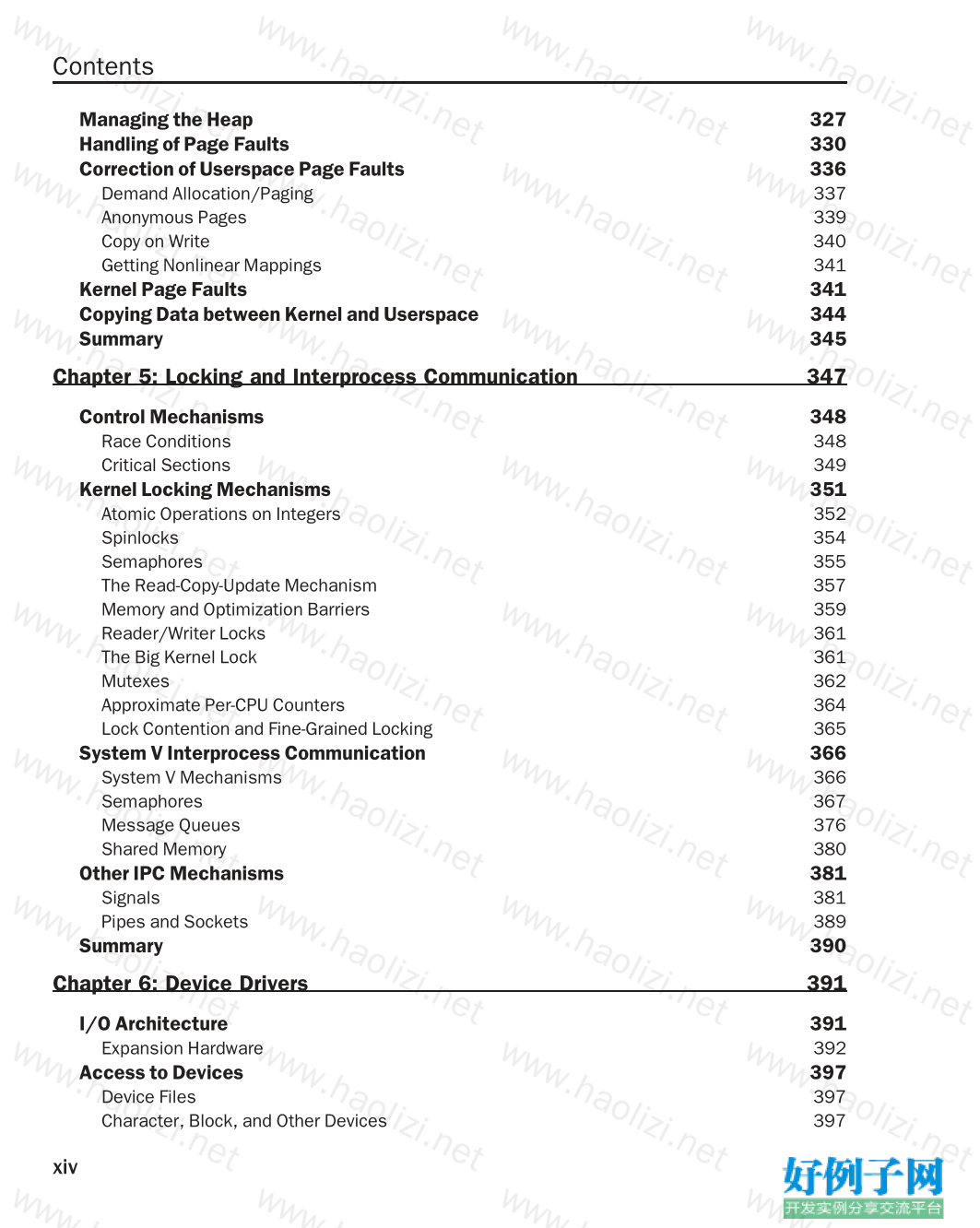
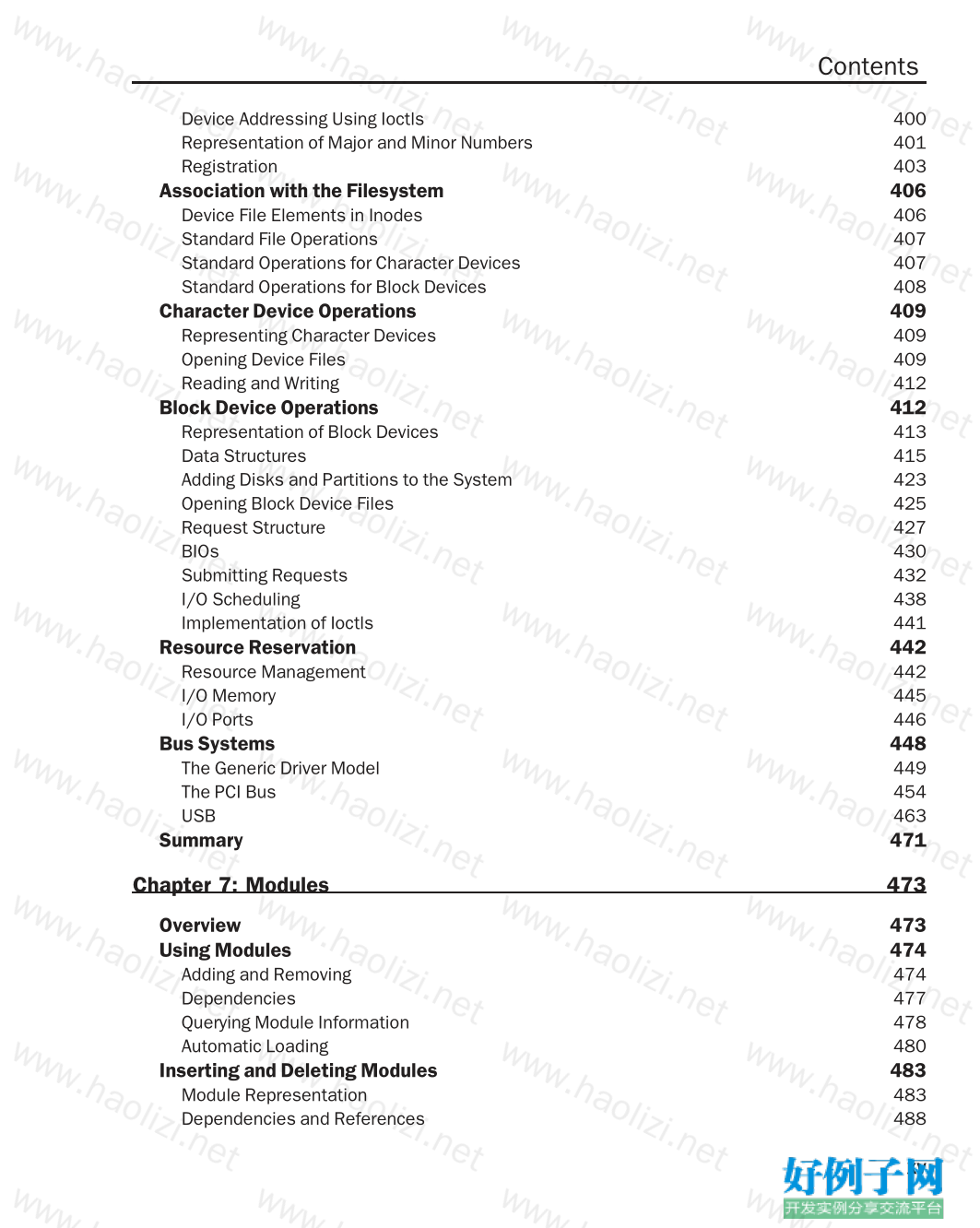
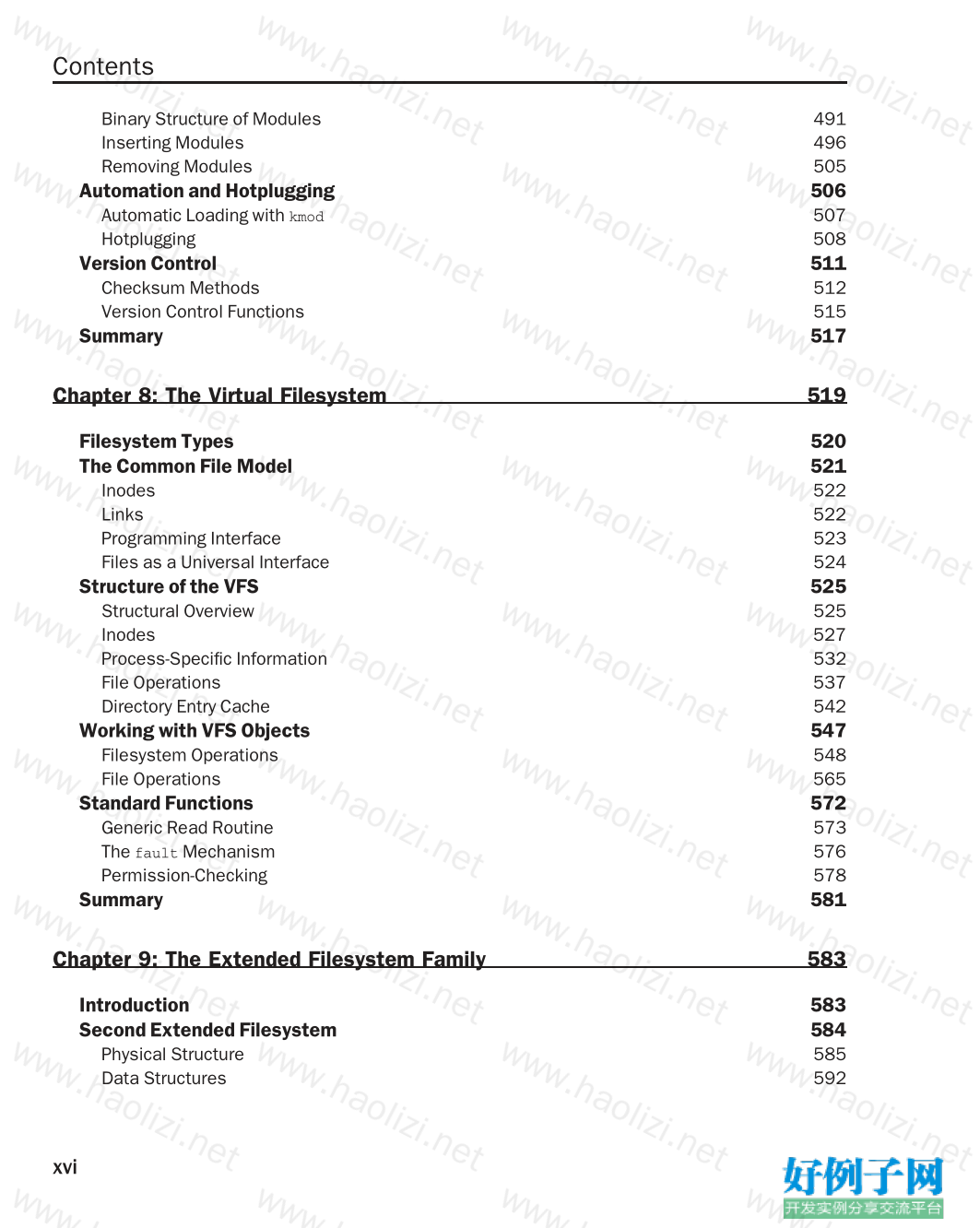

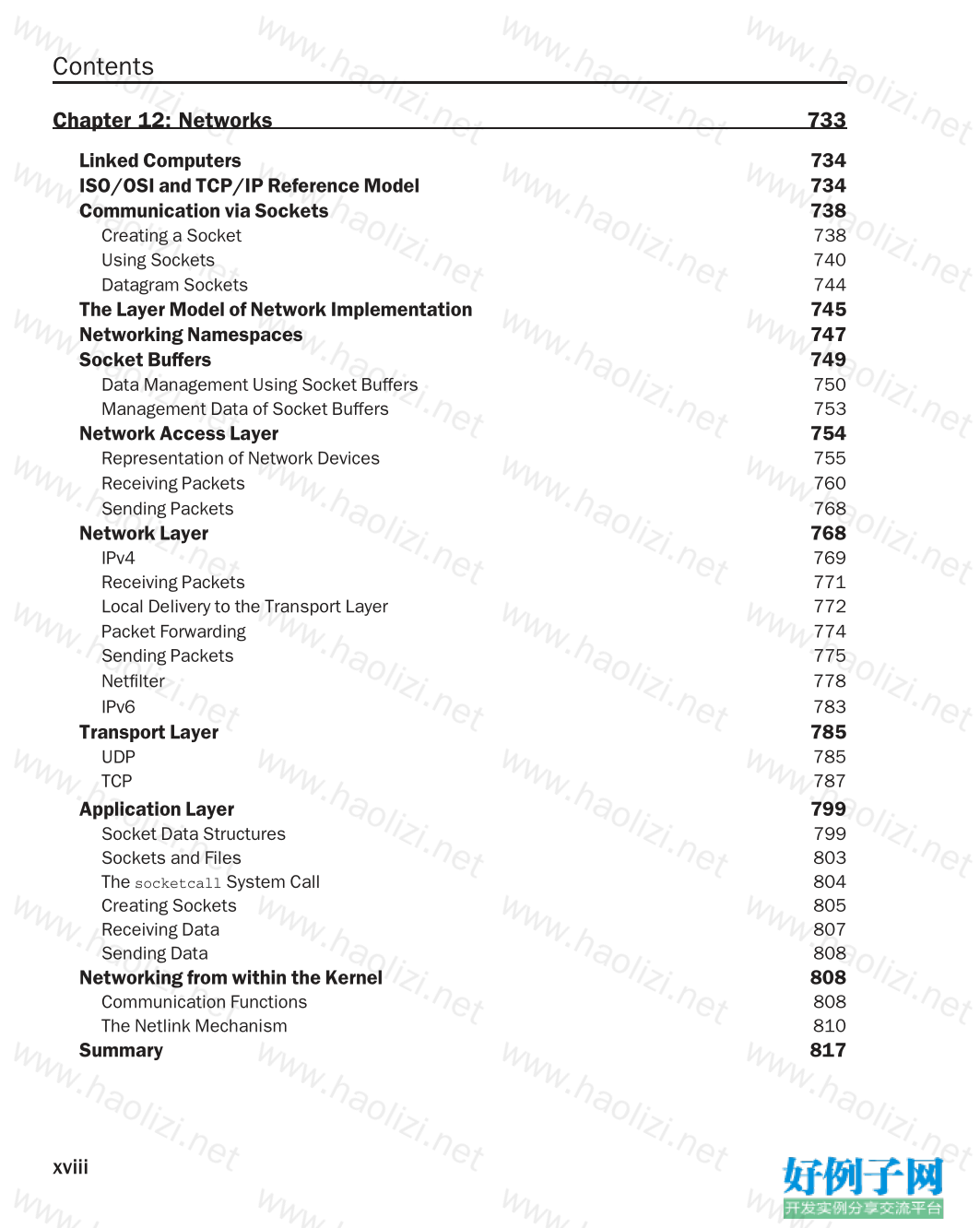
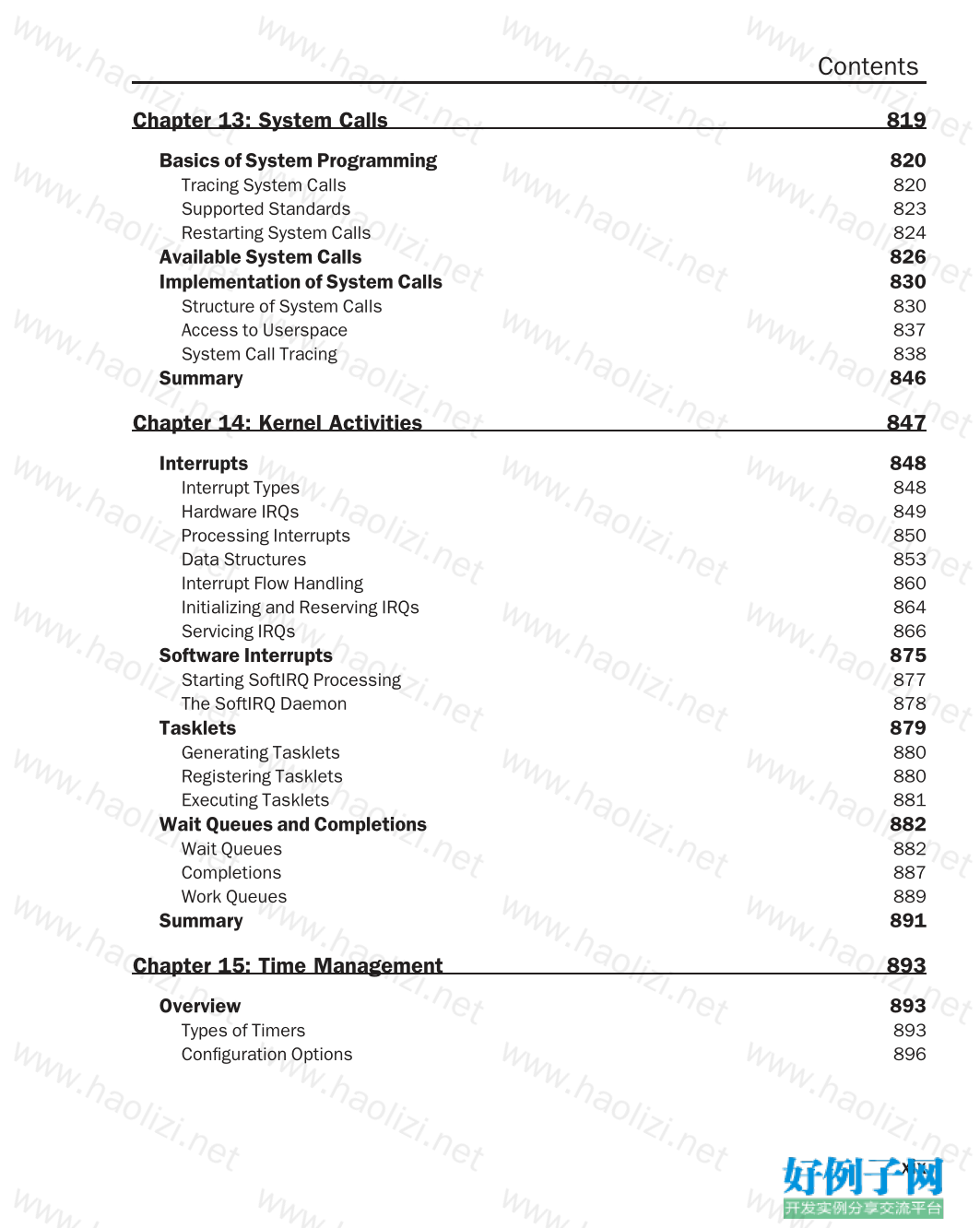




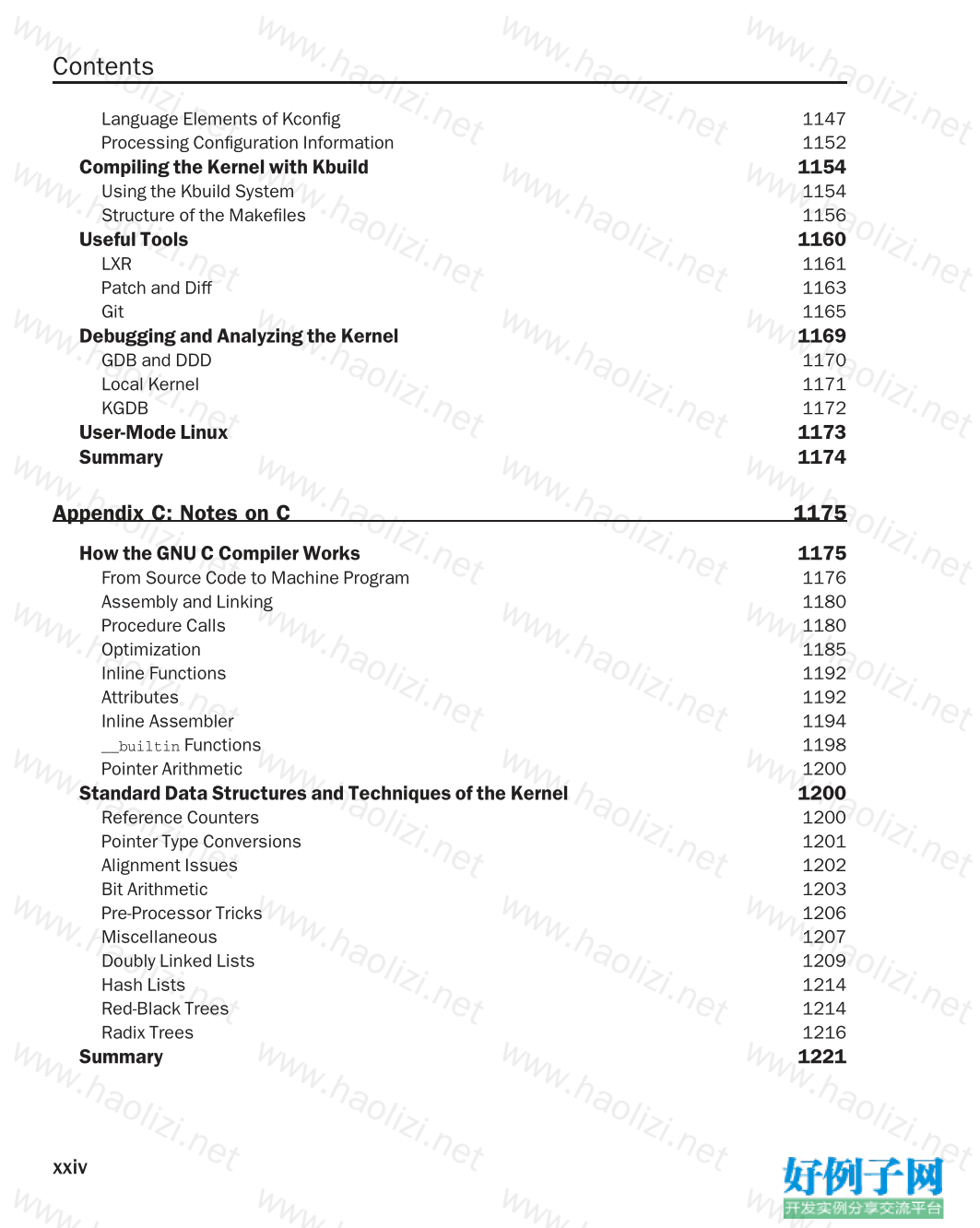
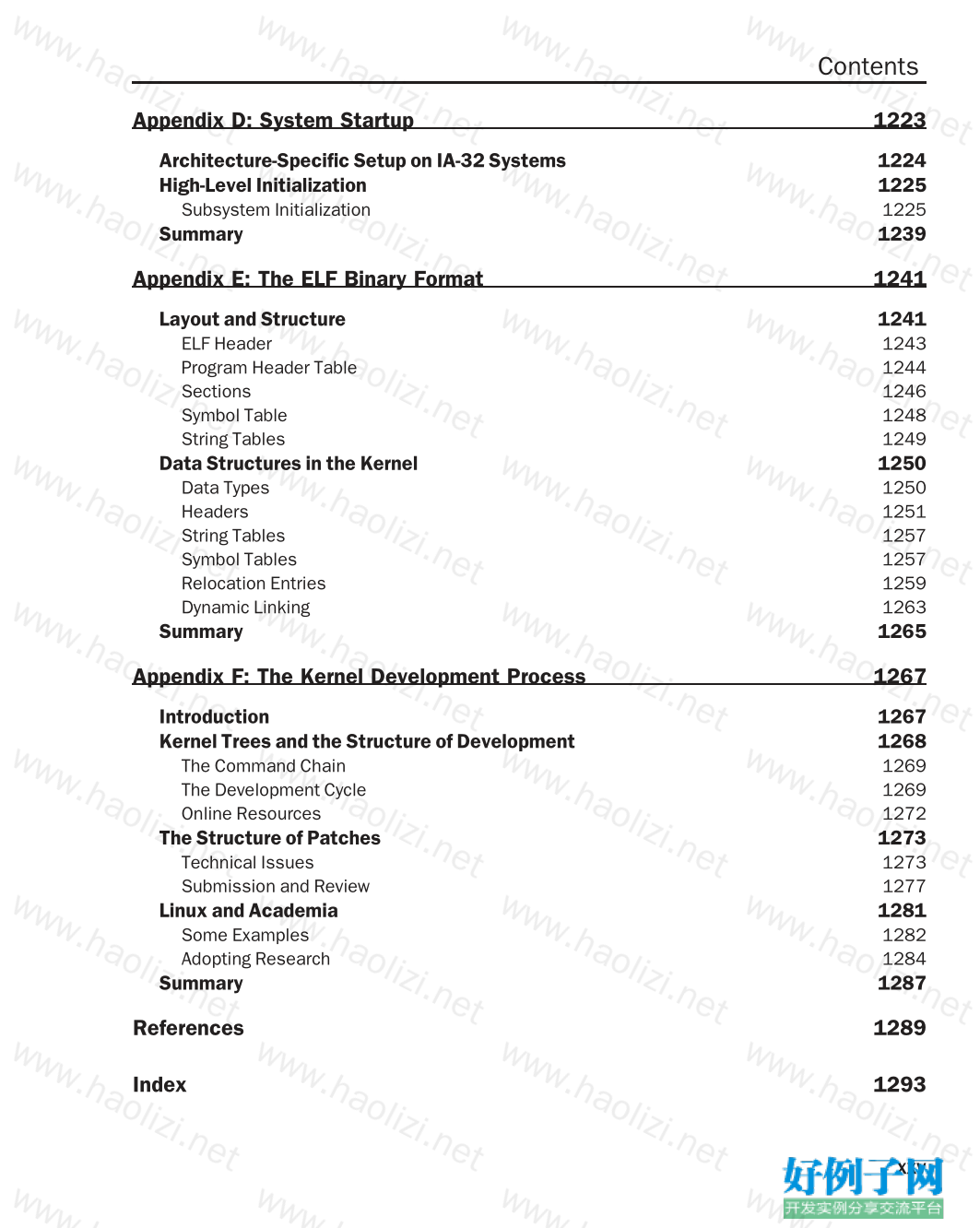
【核心代码】
Contents
Introduction xxvii
Chapter 1: Introduction and Overview 1
Tasks of the Kernel 2
Implementation Strategies 3
Elements of the Kernel 3
Processes, Task Switching, and Scheduling 4
Unix Processes 4
Address Spaces and Privilege Levels 7
Page Tables 11
Allocation of Physical Memory 13
Timing 16
System Calls 17
Device Drivers, Block and Character Devices 17
Networks 18
Filesystems 18
Modules and Hotplugging 18
Caching 20
List Handling 20
Object Management and Reference Counting 22
Data Types 25
... and Beyond the Infinite 27
Why the Kernel Is Special 28
Some Notes on Presentation 29
Summary 33
Chapter 2: Process Management and Scheduling 35
Process Priorities 36
Process Life Cycle 38
Preemptive Multitasking 40
Process Representation 41
Process Types 47
Namespaces 47
Contents
Process Identification Numbers 54
Task Relationships 62
Process ManagementSystem Calls 63
Process Duplication 63
Kernel Threads 77
Starting New Programs 79
Exiting Processes 83
Implementation of the Scheduler 83
Overview 84
Data Structures 86
Dealing with Priorities 93
Core Scheduler 99
The Completely Fair Scheduling Class 106
Data Structures 106
CFS Operations 107
Queue Manipulation 112
Selecting the Next Task 113
Handling the Periodic Tick 114
Wake-up Preemption 115
Handling New Tasks 116
The Real-Time Scheduling Class 117
Properties 118
Data Structures 118
Scheduler Operations 119
Scheduler Enhancements 121
SMP Scheduling 121
Scheduling Domains and Control Groups 126
Kernel Preemption and Low Latency Efforts 127
Summary 132
Chapter 3: Memory Management 133
Overview 133
Organization in the (N)UMA Model 136
Overview 136
Data Structures 138
Page Tables 153
Data Structures 154
Creating and Manipulating Entries 161
Initialization of Memory Management 161
Data Structure Setup 162
Architecture-Specific Setup 169
Memory Management during the Boot Process 191
xii
Contents
Management of Physical Memory 199
Structure of the Buddy System 199
Avoiding Fragmentation 201
Initializing the Zone and Node Data Structures 209
Allocator API 215
Reserving Pages 222
Freeing Pages 240
Allocation of Discontiguous Pages in the Kernel 244
Kernel Mappings 251
The Slab Allocator 256
Alternative Allocators 258
Memory Management in the Kernel 259
The Principle of Slab Allocation 261
Implementation 265
General Caches 283
Processor Cache and TLB Control 285
Summary 287
Chapter 4: Virtual Process Memory 289
Introduction 289
Virtual Process Address Space 290
Layout of the Process Address Space 290
Creating the Layout 294
Principle of Memory Mappings 297
Data Structures 298
Trees and Lists 299
Representation of Regions 300
The Priority Search Tree 302
Operations on Regions 306
Associating Virtual Addresses with a Region 306
Merging Regions 308
Inserting Regions 309
Creating Regions 310
Address Spaces 312
Memory Mappings 314
Creating Mappings 314
Removing Mappings 317
Nonlinear Mappings 319
Reverse Mapping 322
Data Structures 323
Creating a Reverse Mapping 324
Using Reverse Mapping 325
xiii
Contents
Managing the Heap 327
Handling of Page Faults 330
Correction of Userspace Page Faults 336
Demand Allocation/Paging 337
Anonymous Pages 339
Copy on Write 340
Getting Nonlinear Mappings 341
Kernel Page Faults 341
Copying Data between Kernel and Userspace 344
Summary 345
Chapter 5: Locking and Interprocess Communication 347
Control Mechanisms 348
Race Conditions 348
Critical Sections 349
Kernel Locking Mechanisms 351
Atomic Operations on Integers 352
Spinlocks 354
Semaphores 355
The Read-Copy-Update Mechanism 357
Memory and Optimization Barriers 359
Reader/Writer Locks 361
The Big Kernel Lock 361
Mutexes 362
Approximate Per-CPU Counters 364
Lock Contention and Fine-Grained Locking 365
System V Interprocess Communication 366
System V Mechanisms 366
Semaphores 367
Message Queues 376
Shared Memory 380
Other IPC Mechanisms 381
Signals 381
Pipes and Sockets 389
Summary 390
Chapter 6: Device Drivers 391
I/O Architecture 391
Expansion Hardware 392
Access to Devices 397
Device Files 397
Character, Block, and Other Devices 397
xiv
Contents
Device Addressing Using Ioctls 400
Representation of Major and Minor Numbers 401
Registration 403
Association with the Filesystem 406
Device File Elements in Inodes 406
Standard File Operations 407
Standard Operations for Character Devices 407
Standard Operations for Block Devices 408
Character Device Operations 409
Representing Character Devices 409
Opening Device Files 409
Reading and Writing 412
Block Device Operations 412
Representation of Block Devices 413
Data Structures 415
Adding Disks and Partitions to the System 423
Opening Block Device Files 425
Request Structure 427
BIOs 430
Submitting Requests 432
I/O Scheduling 438
Implementation of Ioctls 441
Resource Reservation 442
Resource Management 442
I/O Memory 445
I/O Ports 446
Bus Systems 448
The Generic Driver Model 449
The PCI Bus 454
USB 463
Summary 471
Chapter 7: Modules 473
Overview 473
Using Modules 474
Adding and Removing 474
Dependencies 477
Querying Module Information 478
Automatic Loading 480
Inserting and Deleting Modules 483
Module Representation 483
Dependencies and References 488
xv
Contents
Binary Structure of Modules 491
Inserting Modules 496
Removing Modules 505
Automation and Hotplugging 506
Automatic Loading with kmod 507
Hotplugging 508
Version Control 511
Checksum Methods 512
Version Control Functions 515
Summary 517
Chapter 8: The Virtual Filesystem 519
Filesystem Types 520
The CommonFile Model 521
Inodes 522
Links 522
Programming Interface 523
Files as a Universal Interface 524
Structure of the VFS 525
Structural Overview 525
Inodes 527
Process-Specific Information 532
File Operations 537
Directory Entry Cache 542
Working with VFS Objects 547
Filesystem Operations 548
File Operations 565
Standard Functions 572
Generic Read Routine 573
The fault Mechanism 576
Permission-Checking 578
Summary 581
Chapter 9: The Extended Filesystem Family 583
Introduction 583
SecondExtended Filesystem 584
Physical Structure 585
Data Structures 592
xvi
Contents
Creating a Filesystem 608
Filesystem Actions 610
Third Extended Filesystem 637
Concepts 638
Data Structures 639
Summary 642
Chapter 10: Filesystems without Persistent Storage 643
The proc Filesystem 644
Contents of /proc 644
Data Structures 652
Initialization 655
Mounting the Filesystem 657
Managing /proc Entries 660
Reading and Writing Information 664
Task-Related Information 666
System Control Mechanism 671
Simple Filesystems 680
Sequential Files 680
Writing Filesystems with Libfs 684
The Debug Filesystem 687
Pseudo Filesystems 689
Sysfs 689
Overview 690
Data Structures 690
Mounting the Filesystem 695
File and Directory Operations 697
Populating Sysfs 704
Summary 706
Chapter 11: Extended Attributes and Access Control Lists 707
Extended Attributes 707
Interface to the Virtual Filesystem 708
Implementation in Ext3 714
Implementation in Ext2 721
Access Control Lists 722
Generic Implementation 722
Implementation in Ext3 726
Implementation in Ext2 732
Summary 732
xvii
Contents
Chapter 12: Networks 733
Linked Computers 734
ISO/OSIand TCP/IP ReferenceModel 734
Communication via Sockets 738
Creating a Socket 738
Using Sockets 740
Datagram Sockets 744
The Layer Model of Network Implementation 745
Networking Namespaces 747
Socket Buffers 749
Data Management Using Socket Buffers 750
Management Data of Socket Buffers 753
Network Access Layer 754
Representation of Network Devices 755
Receiving Packets 760
Sending Packets 768
Network Layer 768
IPv4 769
Receiving Packets 771
Local Delivery to the Transport Layer 772
Packet Forwarding 774
Sending Packets 775
Netfilter 778
IPv6 783
Transport Layer 785
UDP 785
TCP 787
Application Layer 799
Socket Data Structures 799
Sockets and Files 803
The socketcall System Call 804
Creating Sockets 805
Receiving Data 807
Sending Data 808
Networking from within the Kernel 808
Communication Functions 808
The Netlink Mechanism 810
Summary 817
xviii
Contents
Chapter 13: System Calls 819
Basics of System Programming 820
Tracing System Calls 820
Supported Standards 823
Restarting System Calls 824
Available System Calls 826
Implementation of System Calls 830
Structure of System Calls 830
Access to Userspace 837
System Call Tracing 838
Summary 846
Chapter 14: Kernel Activities 847
Interrupts 848
Interrupt Types 848
Hardware IRQs 849
Processing Interrupts 850
Data Structures 853
Interrupt Flow Handling 860
Initializing and Reserving IRQs 864
Servicing IRQs 866
Software Interrupts 875
Starting SoftIRQ Processing 877
The SoftIRQ Daemon 878
Tasklets 879
Generating Tasklets 880
Registering Tasklets 880
Executing Tasklets 881
Wait Queues and Completions 882
Wait Queues 882
Completions 887
Work Queues 889
Summary 891
Chapter 15: Time Management 893
Overview 893
Types of Timers 893
Configuration Options 896
xix
Contents
Implementation of Low-Resolution Timers 897
Timer Activation and Process Accounting 897
Working with Jiffies 900
Data Structures 900
Dynamic Timers 902
Generic Time Subsystem 907
Overview 908
Configuration Options 909
Time Representation 910
Objects for Time Management 911
High-Resolution Timers 920
Data Structures 921
Setting Timers 925
Implementation 926
Periodic Tick Emulation 931
Switching to High-Resolution Timers 932
Dynamic Ticks 933
Data Structures 934
Dynamic Ticks for Low-Resolution Systems 935
Dynamic Ticks for High-Resolution Systems 938
Stopping and Starting Periodic Ticks 939
Broadcast Mode 943
Implementing Timer-Related System Calls 944
Time Bases 944
The alarm and setitimer System Calls 945
Getting the Current Time 947
Managing Process Times 947
Summary 948
Chapter 16: Page and Buffer Cache 949
Structure of the Page Cache 950
Managing and Finding Cached Pages 951
Writing Back Modified Data 952
Structure of the Buffer Cache 954
Address Spaces 955
Data Structures 956
Page Trees 958
Operations on Address Spaces 961
Implementation of the Page Cache 966
Allocating Pages 966
Finding Pages 967
xx
Contents
Waiting on Pages 968
Operations with Whole Pages 969
Page Cache Readahead 970
Implementation of the Buffer Cache 974
Data Structures 975
Operations 976
Interaction of Page and Buffer Cache 977
Independent Buffers 982
Summary 988
Chapter 17: Data Synchronization 989
Overview 989
The pdflush Mechanism 991
Starting a New Thread 993
Thread Initialization 994
Performing Actual Work 995
Periodic Flushing 996
Associated Data Structures 996
Page Status 996
Writeback Control 998
Adjustable Parameters 1000
Central Control 1000
Superblock Synchronization 1002
Inode Synchronization 1003
Walking the Superblocks 1003
Examining Superblock Inodes 1003
Writing Back Single Inodes 1006
Congestion 1009
Data Structures 1009
Thresholds 1010
Setting and Clearing the Congested State 1011
Waiting on Congested Queues 1012
Forced Writeback 1013
Laptop Mode 1015
System Calls for SynchronizationControl 1016
Full Synchronization 1016
Synchronization of Inodes 1018
Synchronization of Individual Files 1019
Synchronization of Memory Mappings 1021
Summary 1022
xxi
Contents
Chapter 18: Page Reclaim and Swapping 1023
Overview 1023
Swappable Pages 1024
Page Thrashing 1025
Page-Swapping Algorithms 1026
Page Reclaim and Swapping in the Linux Kernel 1027
Organization of the Swap Area 1028
Checking Memory Utilization 1029
Selecting Pages to Be Swapped Out 1029
Handling Page Faults 1029
Shrinking Kernel Caches 1030
Managing Swap Areas 1030
Data Structures 1030
Creating a Swap Area 1035
Activating a Swap Area 1036
The Swap Cache 1039
Identifying Swapped-Out Pages 1041
Structure of the Cache 1044
Adding New Pages 1045
Searching for a Page 1050
Writing Data Back 1051
Page Reclaim 1052
Overview 1053
Data Structures 1055
Determining Page Activity 1057
Shrinking Zones 1062
Isolating LRU Pages and Lumpy Reclaim 1065
Shrinking the List of Active Pages 1068
Reclaiming Inactive Pages 1072
The Swap Token 1079
Handling Swap-Page Faults 1082
Swapping Pages in 1083
Reading the Data 1084
Swap Readahead 1085
Initiating Memory Reclaim 1086
Periodic Reclaim with kswapd 1087
Swap-out in the Event of Acute Memory Shortage 1090
Shrinking Other Caches 1092
Data Structures 1092
Registering and Removing Shrinkers 1093
Shrinking Caches 1093
Summary 1095
xxii
Contents
Chapter 19: Auditing 1097
Overview 1097
Audit Rules 1099
Implementation 1100
Data Structures 1100
Initialization 1106
Processing Requests 1107
Logging Events 1108
System Call Auditing 1110
Summary 1116
Appendix A: Architecture Specifics 1117
Overview 1117
Data Types 1118
Alignment 1119
Memory Pages 1119
System Calls 1120
String Processing 1120
Thread Representation 1122
IA-32 1122
IA-64 1124
ARM 1126
Sparc64 1128
Alpha 1129
Mips 1131
PowerPC 1132
AMD64 1134
Bit Operations and Endianness 1135
Manipulation of Bit Chains 1135
Conversion between Byte Orders 1136
Page Tables 1137
Miscellaneous 1137
Checksum Calculation 1137
Context Switch 1137
Finding the Current Process 1138
Summary 1139
Appendix B: Working with the Source Code 1141
Organization of the Kernel Sources 1141
Configuration with Kconfig 1144
A Sample Configuration File 1144
xxiii
Contents
Language Elements of Kconfig 1147
Processing Configuration Information 1152
Compiling the Kernel with Kbuild 1154
Using the Kbuild System 1154
Structure of the Makefiles 1156
Useful Tools 1160
LXR 1161
Patch and Diff 1163
Git 1165
Debugging and Analyzing the Kernel 1169
GDB and DDD 1170
Local Kernel 1171
KGDB 1172
User-Mode Linux 1173
Summary 1174
Appendix C: Notes on C 1175
How the GNU C Compiler Works 1175
From Source Code to Machine Program 1176
Assembly and Linking 1180
Procedure Calls 1180
Optimization 1185
Inline Functions 1192
Attributes 1192
Inline Assembler 1194
__builtin Functions 1198
Pointer Arithmetic 1200
Standard Data Structures and Techniques of the Kernel 1200
Reference Counters 1200
Pointer Type Conversions 1201
Alignment Issues 1202
Bit Arithmetic 1203
Pre-Processor Tricks 1206
Miscellaneous 1207
Doubly Linked Lists 1209
Hash Lists 1214
Red-Black Trees 1214
Radix Trees 1216
Summary 1221
xxiv
Contents
Appendix D: System Startup 1223
Architecture-Specific Setup on IA-32 Systems 1224
High-Level Initialization 1225
Subsystem Initialization 1225
Summary 1239
Appendix E: The ELF Binary Format 1241
Layout and Structure 1241
ELF Header 1243
Program Header Table 1244
Sections 1246
Symbol Table 1248
String Tables 1249
Data Structures in the Kernel 1250
Data Types 1250
Headers 1251
String Tables 1257
Symbol Tables 1257
Relocation Entries 1259
Dynamic Linking 1263
Summary 1265
Appendix F: The Kernel Development Process 1267
Introduction 1267
Kernel Trees and the Structure of Development 1268
The Command Chain 1269
The Development Cycle 1269
Online Resources 1272
The Structure of Patches 1273
Technical Issues 1273
Submission and Review 1277
Linux and Academia 1281
Some Examples 1282
Adopting Research 1284
Summary 1287
References 1289
Index 1293
小贴士
感谢您为本站写下的评论,您的评论对其它用户来说具有重要的参考价值,所以请认真填写。
- 类似“顶”、“沙发”之类没有营养的文字,对勤劳贡献的楼主来说是令人沮丧的反馈信息。
- 相信您也不想看到一排文字/表情墙,所以请不要反馈意义不大的重复字符,也请尽量不要纯表情的回复。
- 提问之前请再仔细看一遍楼主的说明,或许是您遗漏了。
- 请勿到处挖坑绊人、招贴广告。既占空间让人厌烦,又没人会搭理,于人于己都无利。
关于好例子网
本站旨在为广大IT学习爱好者提供一个非营利性互相学习交流分享平台。本站所有资源都可以被免费获取学习研究。本站资源来自网友分享,对搜索内容的合法性不具有预见性、识别性、控制性,仅供学习研究,请务必在下载后24小时内给予删除,不得用于其他任何用途,否则后果自负。基于互联网的特殊性,平台无法对用户传输的作品、信息、内容的权属或合法性、安全性、合规性、真实性、科学性、完整权、有效性等进行实质审查;无论平台是否已进行审查,用户均应自行承担因其传输的作品、信息、内容而可能或已经产生的侵权或权属纠纷等法律责任。本站所有资源不代表本站的观点或立场,基于网友分享,根据中国法律《信息网络传播权保护条例》第二十二与二十三条之规定,若资源存在侵权或相关问题请联系本站客服人员,点此联系我们。关于更多版权及免责申明参见 版权及免责申明



网友评论
我要评论